Introduced by Jesse P. Karlsberg
April’s song is an early nineteenth-century set piece for a cappella four-part harmony singing with a name and hymn text that evoke the warming weather, “vernal flowers,” and “warbling choirs” of birds that accompany this season of the year. SPRING was published, without attribution, in James M. Boyd’s 1818 shape-note tunebook Virginia Sacred Musical Repository as a three-part setting. It acquired a fourth part, by W. H. Swan, when it was reprinted in the 1848 Harp of Columbia.1 It sets to music the second verse of Charles Wesley’s eighteenth-century hymn, “The voice of my beloved sounds.” SPRING is best known today thanks to its inclusion in The Sacred Harp, the popular tunebook used at all-day singings and conventions each weekend across the United States and in about two dozen countries.
One often-celebrated feature of Sacred Harp singings shared with many of the other song traditions CDSS members enjoy is their orientation toward participation rather than performance. At a Sacred Harp singing every singer has the opportunity to stand in the center of the style’s hollow square seating arrangement and lead a song or two of their choice from The Sacred Harp. As Mark T. Godfrey and I recently wrote, “[t]he songs leaders choose are building blocks that construct our experience of the day.” Leaders’ choices are deeply individual, involving songs’ “words, their music, and the memories and emotions that accrue around them.” But as we discovered by analyzing the minutes documenting thousands of singings held since 1995, singers’ choices of when to lead a select handful of songs, including those featuring texts associated with holidays such as Christmas, Easter, and the Fourth of July, and a select pair—WINTER and SPRING—named for seasons, reflect how their “individual discrete decisions build over time, shaping the seasonal ebb and flow of our collective experience.”2
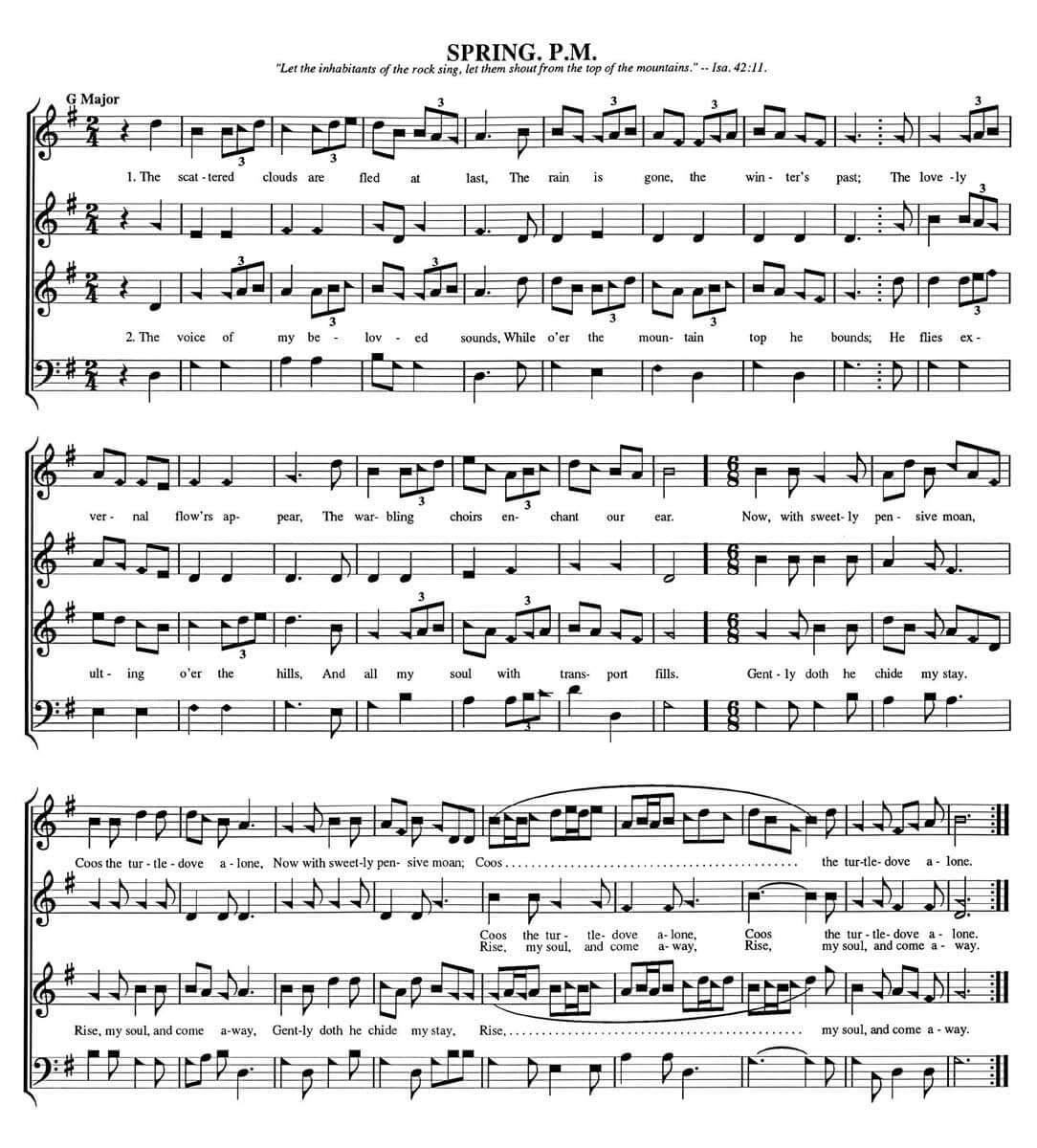
SPRING is led most frequently during the two-week block coinciding with the vernal equinox, the official beginning of spring—perhaps less the result of singers’ intentional marking of the equinox than a general awareness of the changing of the seasons. SPRING remains seasonably popular for the following two months, a period during which it is about twice as popular as during the rest of the year. As Mark and I discovered, the song then dips in popularity, before briefly spiking again in mid-July, perhaps reflecting a bit of nostalgia for the season’s cooler weather after summer’s heat arrives.3
SPRING is one of the more challenging songs in The Sacred Harp, with a wide range, complicated dotted rhythms, and a change in time from 2/4 to 6/8. The song is an example of a “set piece,” a relatively uncommon genre in the shape-note singing canon in which “a piece of music [is] set with particular words and designed to be used with those words only.”4 SPRING’s special relationship between tune and text is most evident in the remarkable word painting on the word “coo” late in the song, where the onomatopoeic word for a bird’s call is paired with a dramatic ascending figure in the tenor (melody), echoed by a similar figure in the treble part.
The Sacred Harp’s SPRING isn’t the only song of the season accessible to shape-note singers. The Northern Harmony includes a 1793 rollicking fuging tune also called SPRING by central Massachusetts composer Joseph Stone. It’s spring-themed verses of Isaac Watts’s 1719 versification of Psalm 147 suit its inclusion in the tunebook as part of a three-song sequence of early New England tunes arranged as an anthem on the seasons of the year.
Whether you sing SPRING, or SPRING, or even WINTER, spend a bit of time this month hailing the changing of the seasons with song.
Former CDSS board member Jesse P. Karlsberg is a postdoctoral fellow at the Emory Center for Digital Scholarship, and editor of Original Sacred Harp: Centennial Edition. He is an active Sacred Harp singer, teacher, composer, and organizer.
Multimedia Extras:
- Gosia Perycz, of Warsaw, Poland, leads SPRING at the first Germany Sacred Harp Convention, Hamburg, May 31, 2014.
- NEA National Heritage Fellow Hugh McGraw, of Bremen, Georgia, sings the tenor line to SPRING on his How to Sing Sacred Harp (Bremen, GA: Sacred Harp Publishing Company, 1984). Used by permission of the Sacred Harp Publishing Company.
- Printable words and music of SPRING (2.4MB PDF), adapted from Hugh McGraw, et al., eds., The Sacred Harp: 1991 Edition (Bremen, GA: Sacred Harp Publishing Company, 1991), 188–189. Used by permission of the Sacred Harp Publishing Company.
Footnotes
1 David Warren Steel, The Makers of the Sacred Harp (Urbana: University of Illinois Press, 2010), 204.
2 Jesse P. Karlsberg and Mark T. Godfrey, “Seasonal Songs,” Sacred Harp Publishing Company Newsletter 4, no. 2 (December 31, 2015).
3 Ibid.
4 Hugh McGraw et al., eds., The Sacred Harp: 1991 Edition (Carrollton, GA: Sacred Harp Publishing Company, 1991), 23.

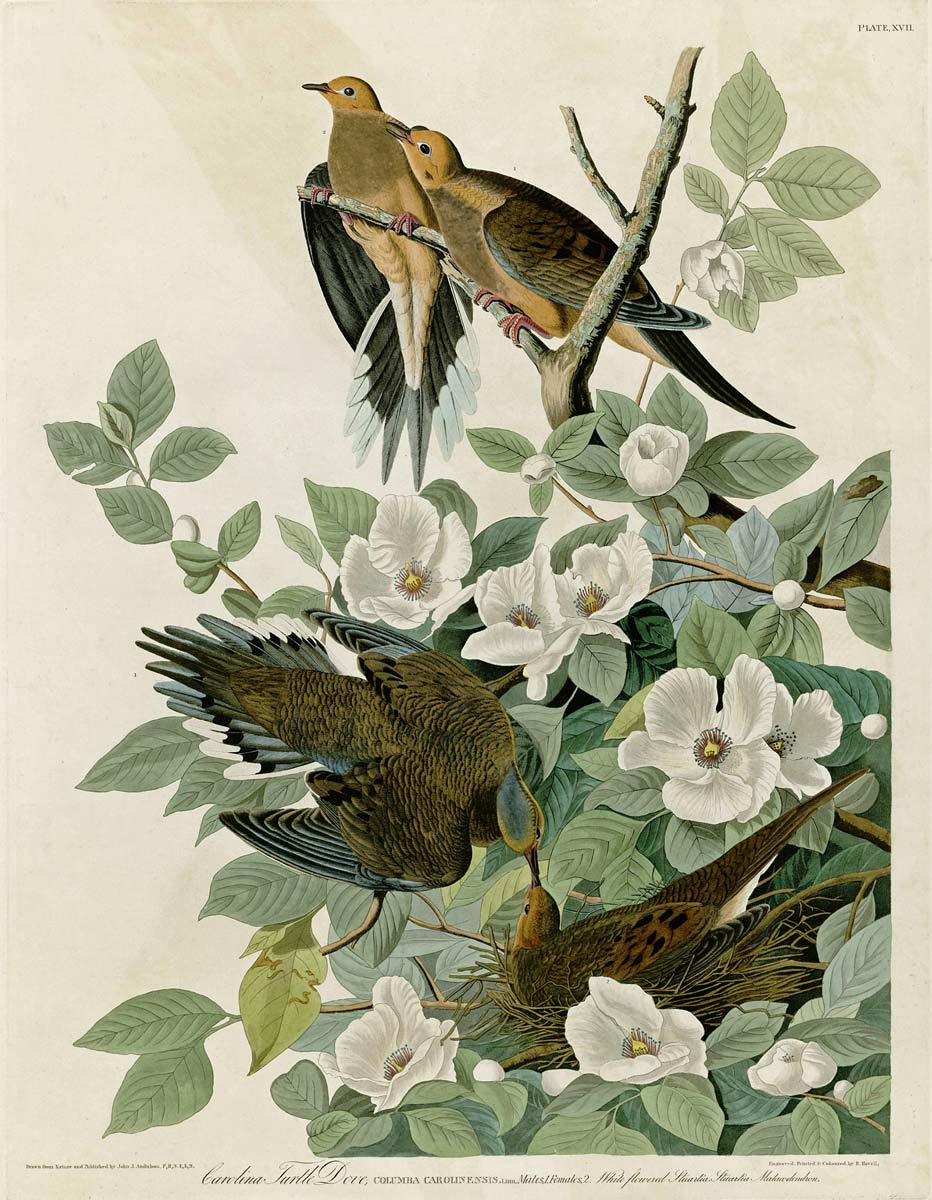

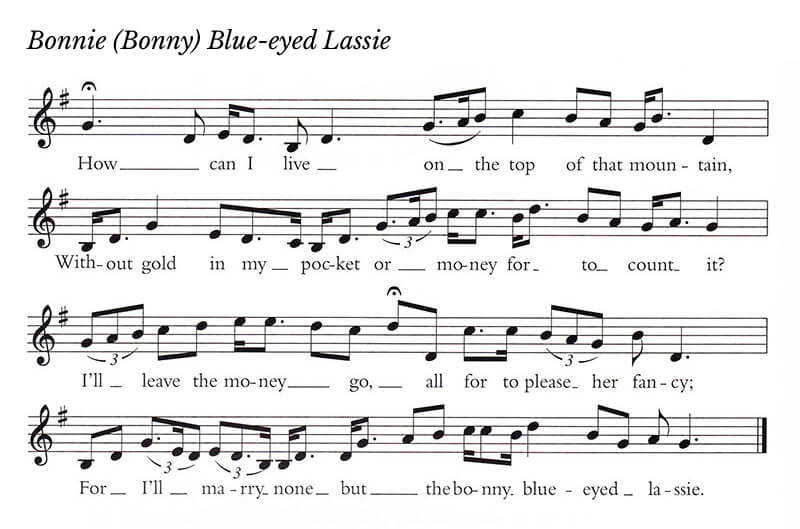
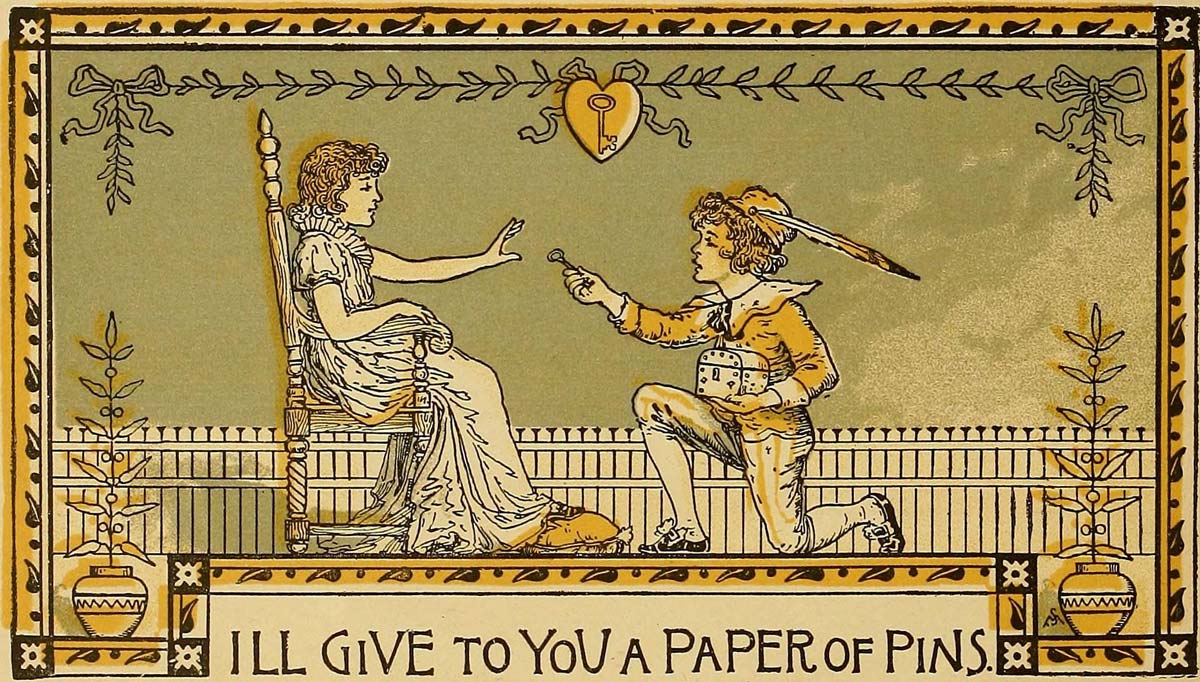
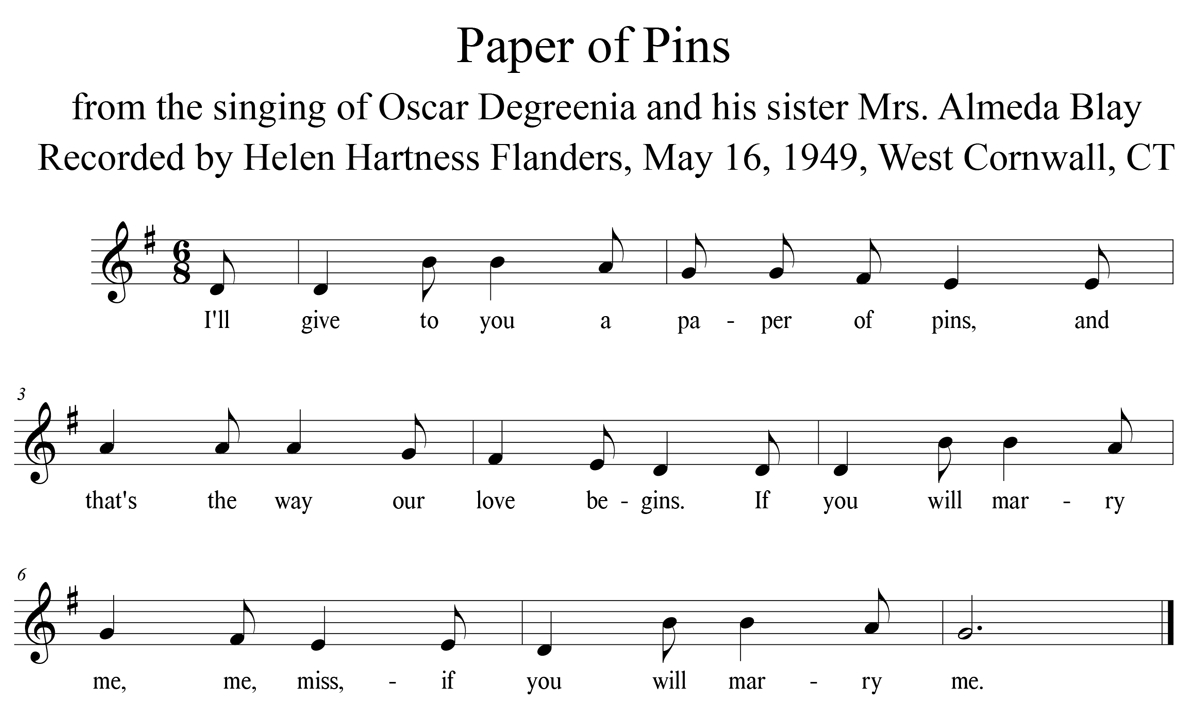
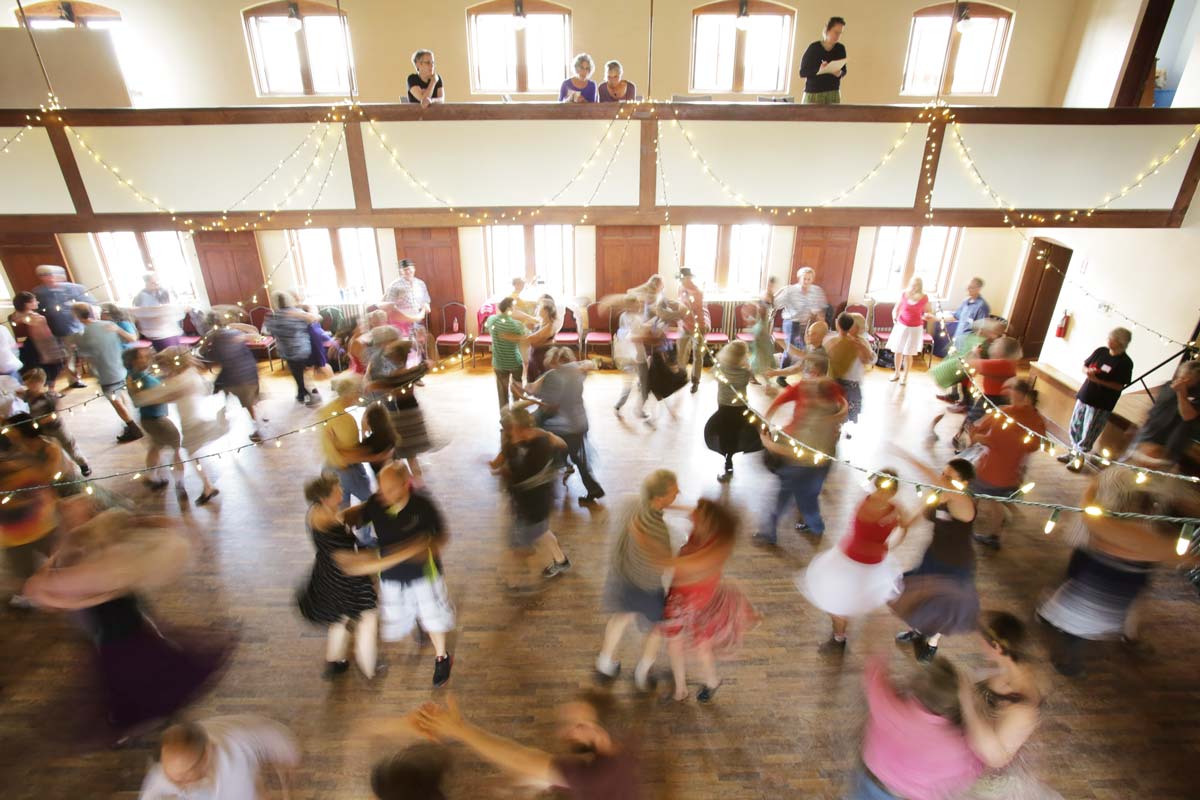

 Thanks to the Massachusetts Cultural Council for their generous support.
Thanks to the Massachusetts Cultural Council for their generous support.